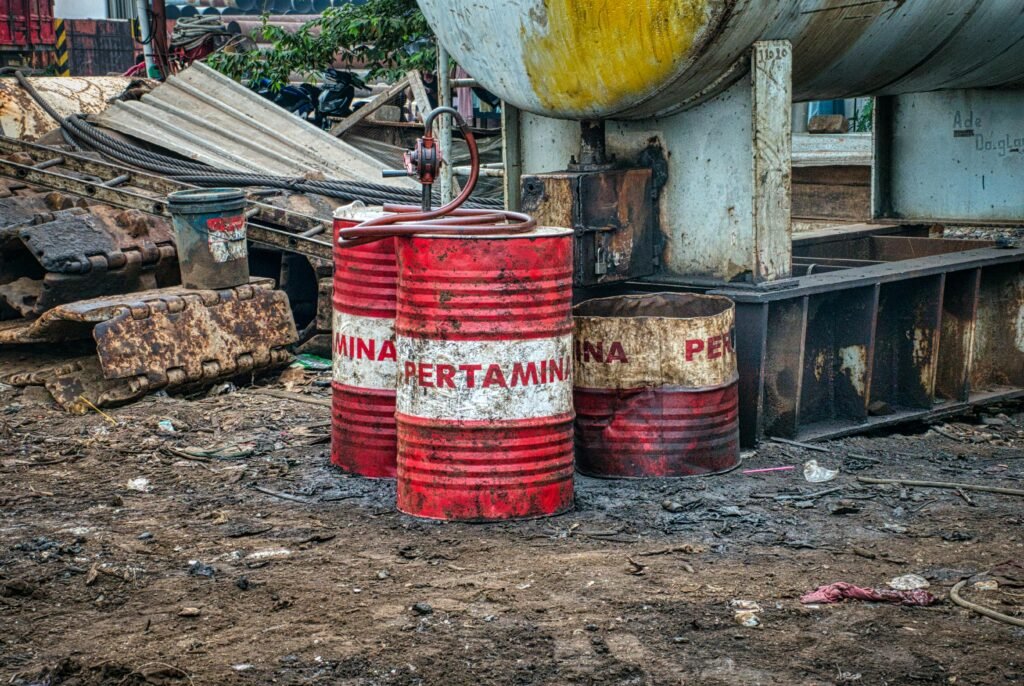
Imagine your phone—it lets you call for help fast or watch a video anywhere. Now think about where it goes when it dies. Technology is a big part of life today. It gives us amazing things like medicine to heal people, internet to connect far-off friends, and clean power from wind or sun. But it also tears up land, piles up trash, and keeps us staring at screens too much. Let us dig into how technology helps and hurts the planet and us, plus what we can do about it, so you learn something real and feel good reading along.
The Two Sides of Technology
Technology does a lot of good stuff. It makes life better with tools like heart machines in hospitals, apps to talk across the world, and buses that run smooth without choking the air. For example, solar panels make electricity without burning dirty coal, keeping skies clearer. Because of this, we live longer, get jobs done quick, and enjoy fun things like games or music on demand.
But there is a downside. Making tech—like phones or computers—digs up the ground for metals and leaves messes behind. Old gadgets turn into e-waste—broken tech trash—that poisons dirt and water if we toss it wrong. Plus, running all these machines takes power, sending out greenhouse gases—gases that trap heat and make Earth hotter. So, technology gives us a lot but bangs up the planet too, and we need to figure out how to handle both sides.
How Technology Hurts the Environment
Tech’s fast growth hits nature hard. It starts with making it—mining rare earth minerals like lithium for batteries and cobalt for chips rips up forests and hills. This kills homes for animals and plants, cutting biodiversity—the mix of life that keeps nature strong. Water near mines gets toxic too—stuff flows in, hurting fish and people who need it clean. For example, in Congo, cobalt mines leave mud that poisons rivers. Because this mining pumps out greenhouse gases, it speeds up climate change big time.
Using tech makes it worse. Data centers—big rooms full of computers—keep the internet going and eat tons of power. They use about 1% of all electricity on Earth, often from coal or gas, spitting carbon dioxide into the air. Every video you stream or email you send burns energy far away, adding heat bit by bit. So, our daily clicks stack up trouble we cannot see right in front of us.
Throwing tech away is the ugliest part. E-waste—old phones, TVs, chargers—piles up fast, hitting millions of tons every year. If we do not recycle it, bad stuff like lead and mercury leaks into soil and rivers, making animals and us sick. Most ends up in landfills, wasting metals we could use again instead of digging more. Because of this, the impact of technology on environment yells for smarter ways to fix it.
How Tech Changes Nature
Tech shifts nature’s balance too. Mining clears trees that suck up carbon dioxide—without them, more heat sticks around. Rivers get messed up—dams for tech power flood land or dry it out downstream, throwing off fish and farms. For example, in India, dams for electricity flood villages, pushing birds and deer away. Noise from machines—like wind turbines spinning—bugs animals too, scaring bats or birds off their paths. So, tech’s reach shakes up plants, water, and critters in ways that hit us later.

How Technology Hits Our Minds
Tech messes with our heads as much as the planet. It keeps us close—video calls link you to family anywhere—but too much turns it sour. Phones buzz with texts and alerts all day, keeping us jumpy. You cannot chill when work pings at night—it piles stress on thick. For example, kids checking phones late stay wired, not sleepy. So, this rush makes anxiety grow because we cannot turn it off.
Social media adds more. Scrolling shows perfect lives—big houses, cool trips—that are not yours. You compare, feel low, and chase likes instead of real talks. Studies say heavy users get sad—depression sneaks in. In cities, teens scroll hours, feeling down after. Because it pulls us into a fake bubble, technology and mental health crash into each other hard.
Loneliness creeps up too. Tech ties us online but leaves us solo for real. Typing beats hugs or laughs with buddies, and you feel empty even with tons of followers. Some folks hide inside with screens, not friends, missing real warmth. So, even with tech linking us, it can cut us off where it matters most.
Physical Health Takes a Hit
Bodies feel it—not just minds. Sitting with screens all day stiffens your back and neck—people call it “tech neck” from hunching over phones. Eyes sting from blue light—staring at laptops blurs sight or kicks up headaches. For example, gamers squint after hours on. Sleep gets short too—screen glow tricks your brain into staying awake when you need rest. Because tech keeps us stuck and buzzing, it wears us down slow.
Jobs and Tech’s Ups and Downs
Tech shakes up work—good and bad. It makes jobs—think programmers or wind turbine builders—bringing cash to towns. But it wrecks some too—like miners losing land to machines or trash pickers near e-waste dumps breathing fumes. For example, in Ghana, folks sift old tech for metals, getting sick from it. So, tech grows money but risks lives if we do not watch out.

Solutions to Make It Better
We can tame tech’s bad sides with simple fixes for Earth and us. Here is how we do it.
Take a Screen Break
A digital detox—dropping phones for a bit—clears your mind. Skip screens a day, walk outside, or chat face-to-face. It cuts worry, sharpens your head, and brings real people closer. For example, no phone at supper feels calm and nice. So, stepping back helps technology and mental health get along better.
Use Green Tech
Sustainable technology keeps the planet safe. Recycle old gear—take phones to e-waste spots so metals like copper get reused, not dumped. Buy energy-smart stuff—high-star-rated fridges or lights use less power, cutting greenhouse gases. Brands like HP recycle their own tech now. Because this eases tech’s mess, it is gold for nature.
Run It Clean
Switch tech to renewable energy—sun, wind, water—instead of coal. Solar panels on data centers or wind for factories drop carbon dioxide big. You can push it—buy from brands using green power, like Google’s wind farms. For example, a solar-charged laptop feels clean to use. So, clean energy turns the impact of technology on environment into a plus.
Global Examples That Show It
See it happen—Denmark powers tech with wind, cutting gas. In India, e-waste hubs like Delhi, Bengaluru recycle tons, saving soil. Sweden’s “flight shame” push swaps planes for trains, easing air pollution. In Japan, some schools limit screens—kids use books more, calming minds for years. Because these places act, sustainable technology solutions show us how to do it right.
What You Can Do Every Day
You can help.
Cut screen time—read a book or play outside instead of scrolling.
Recycle cords—find a bin near you to toss them safe.
Buy green—pick eco-friendly brands that last long and fix easy.
Tell folks—share how less tech trash keeps air fresh.
For example, using a bamboo phone case beats plastic any day. Because your moves stack up, they nudge tech to help, not hurt.
Why It Matters to You
Technology’s reach touches you—cleaner air from less e-waste means better breathing, calmer days from fewer screens mean happier heads. It feeds the planet too—fewer mines save forests, less gas cools Earth. If we let tech run wild, smog thickens, and stress climbs. But if we steer it right, we get tools that lift without breaking us. So, the impact of technology on environment and well-being is your story too—shape it smart.
What do you think? Share below—your ideas keep this going. Let us balance technology for Earth and us together!
Frequently Asked Questions (FAQs)
How Does Making Technology Hurt the Planet?
Making technology hurts the planet because we dig up stuff like lithium and cobalt for batteries and chips. This mining tears up forests and dirt, killing homes for animals and plants—what we call biodiversity, the mix of life nature needs. Water gets toxic too—mines leak bad stuff into rivers, hurting fish and people. For example, in Australia, lithium mines pump out greenhouse gases—gases that trap heat and warm Earth. So, building tech leaves a big mess behind.
Why Does Technology Make Us Feel Stressed or Sad?
Technology makes us feel stressed or sad because it never stops. Phones buzz with messages all day, keeping us on edge—we cannot relax. Social media shows perfect lives we do not have, so we feel down comparing ourselves. For example, scrolling hours can spark depression, studies say. It cuts real friend time too, leaving us lonely even with online chats. So, too much tech tangles our heads bad.
What Can We Do to Use Technology Without Problems?
We can use technology without problems by cutting back and going green. Take a break—skip screens a day to calm down and talk in person. Recycle old gadgets—drop them at e-waste spots so metals get reused, not trashed. Use solar power for tech—it cuts greenhouse gases from coal. For example, a wind-charged phone helps Earth. So, these steps keep tech good for us and the planet.






